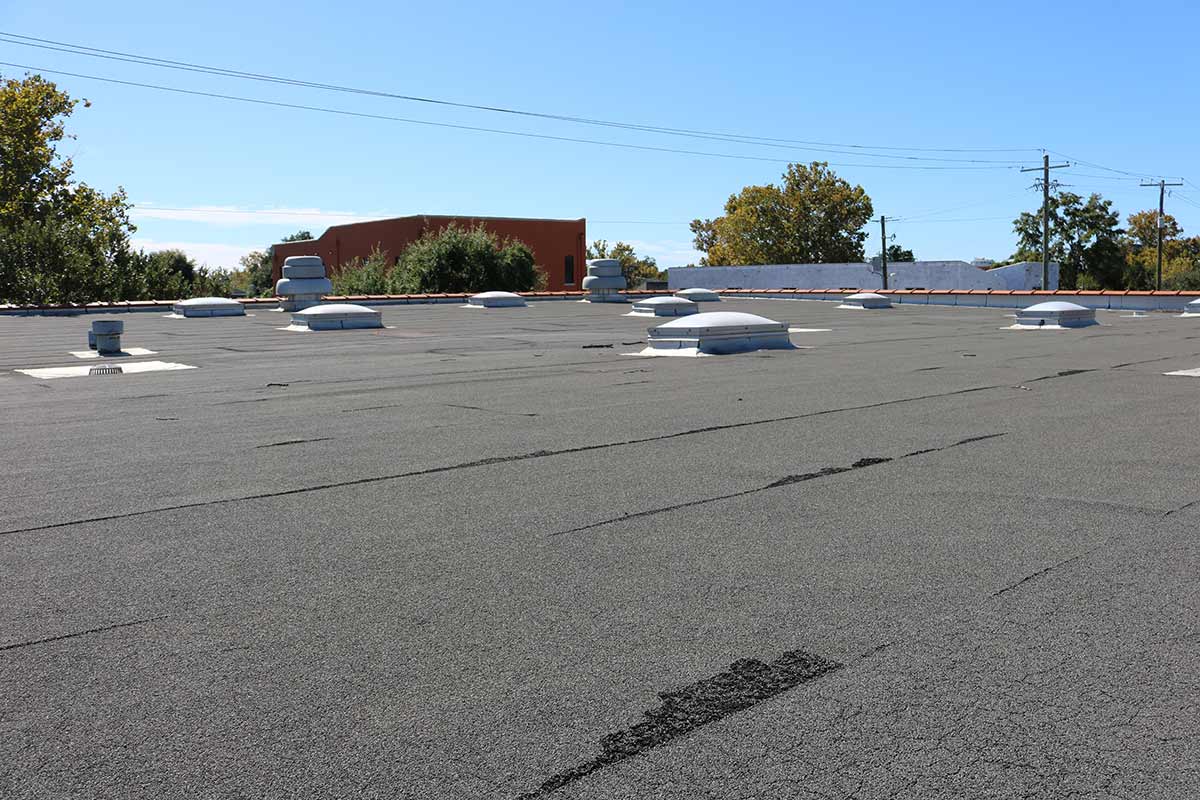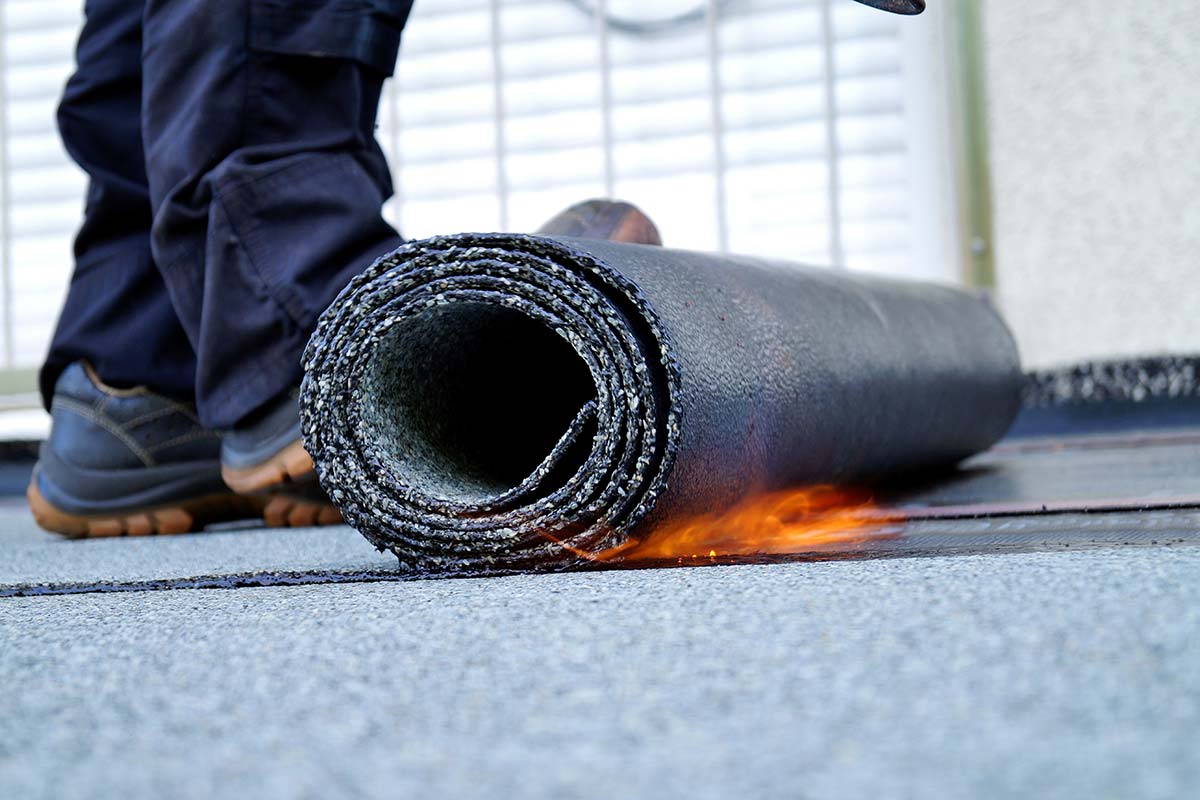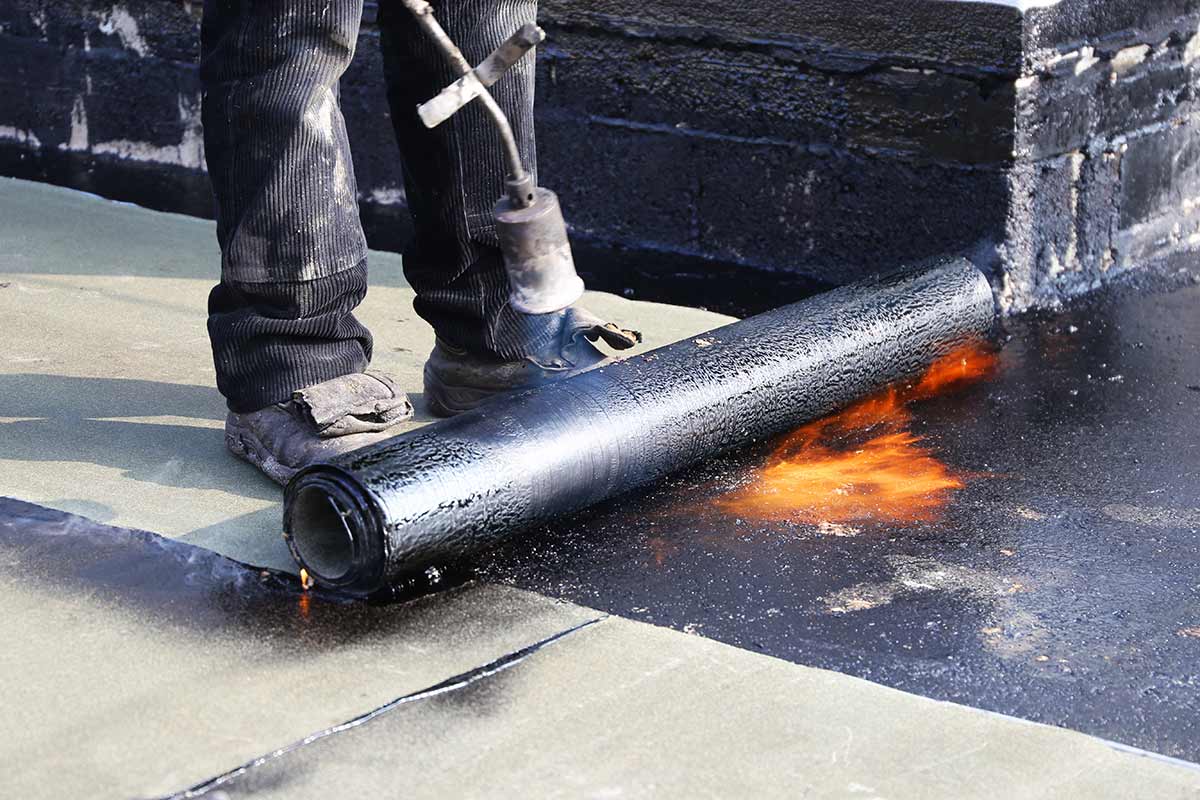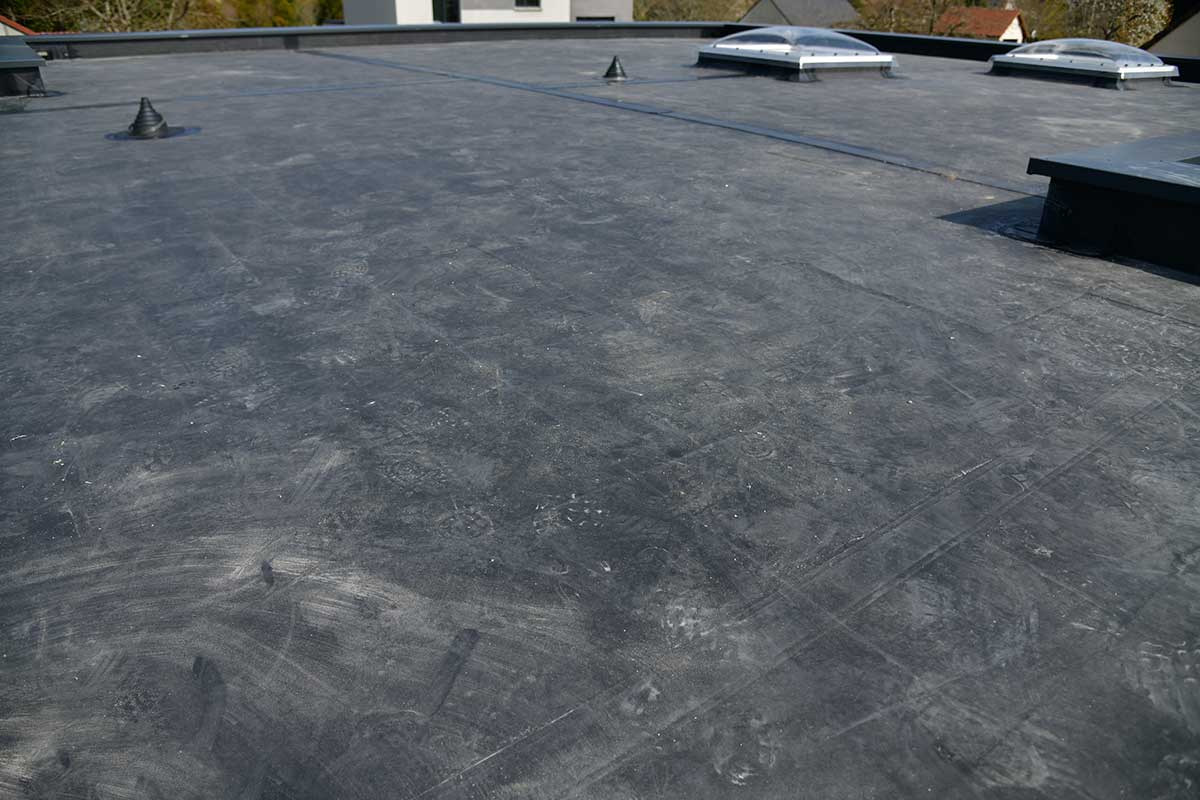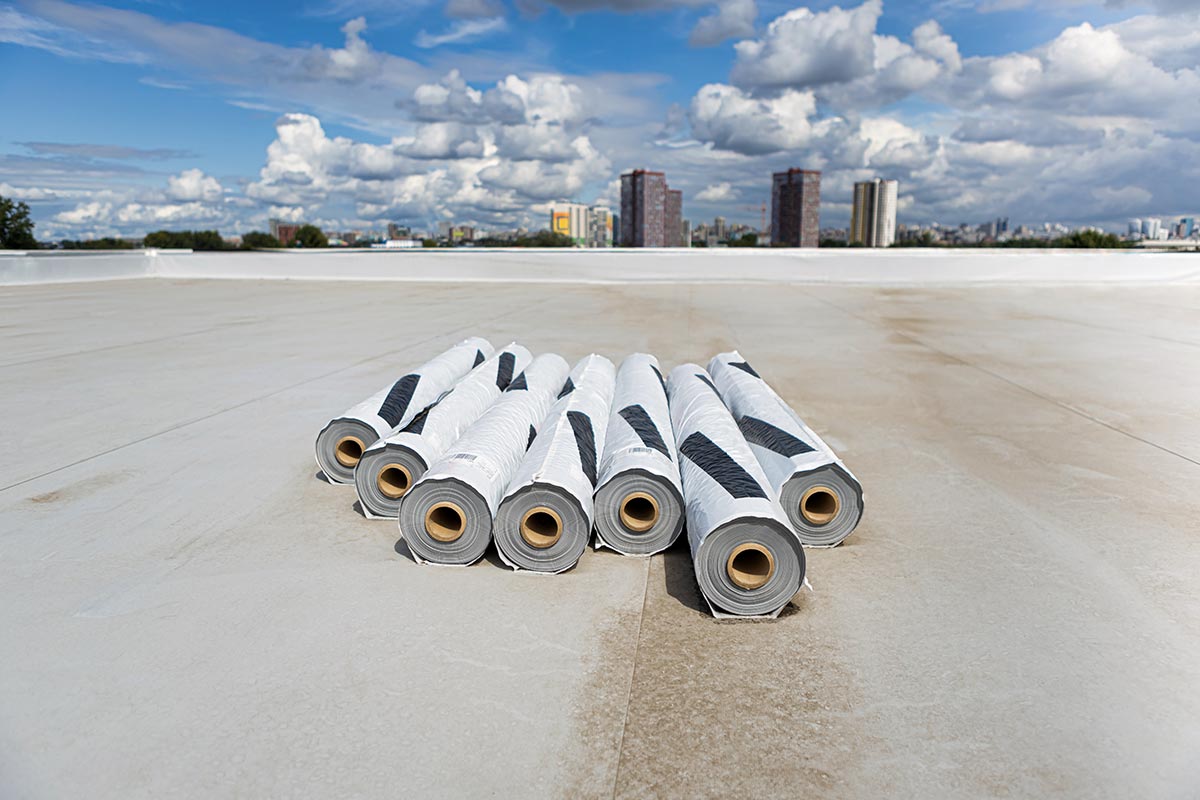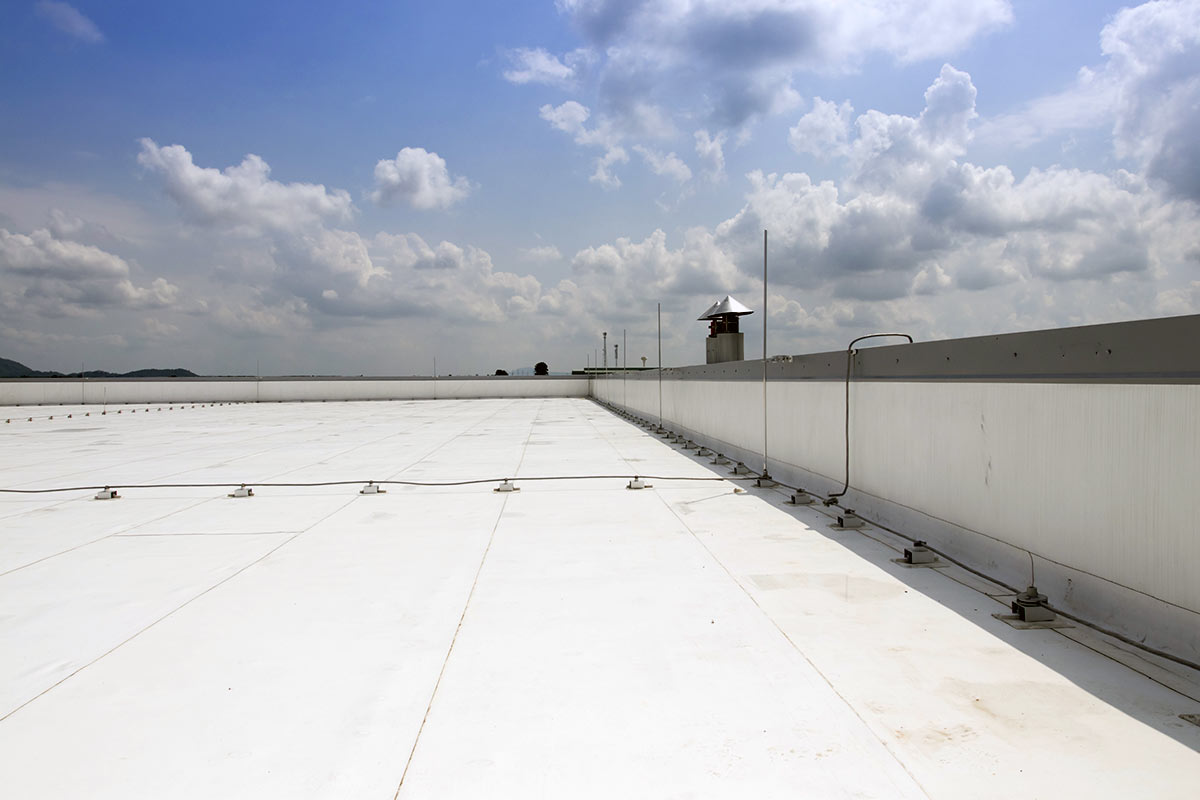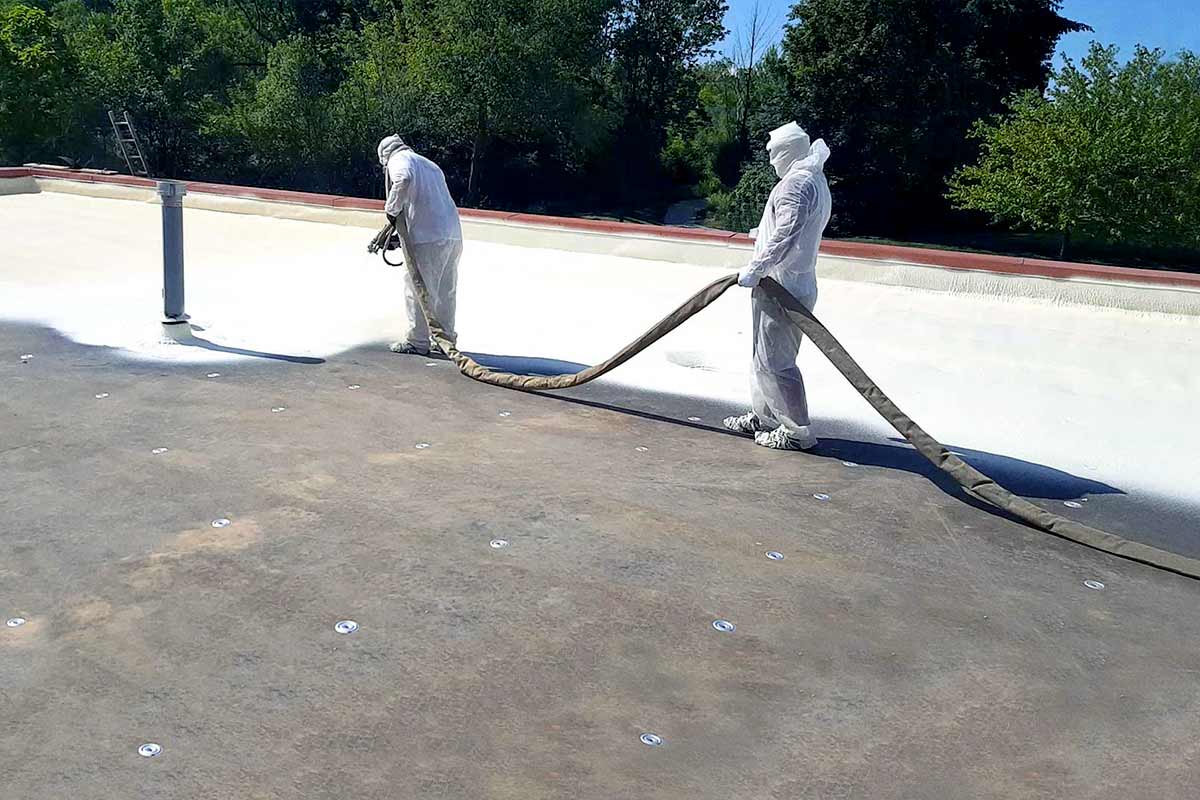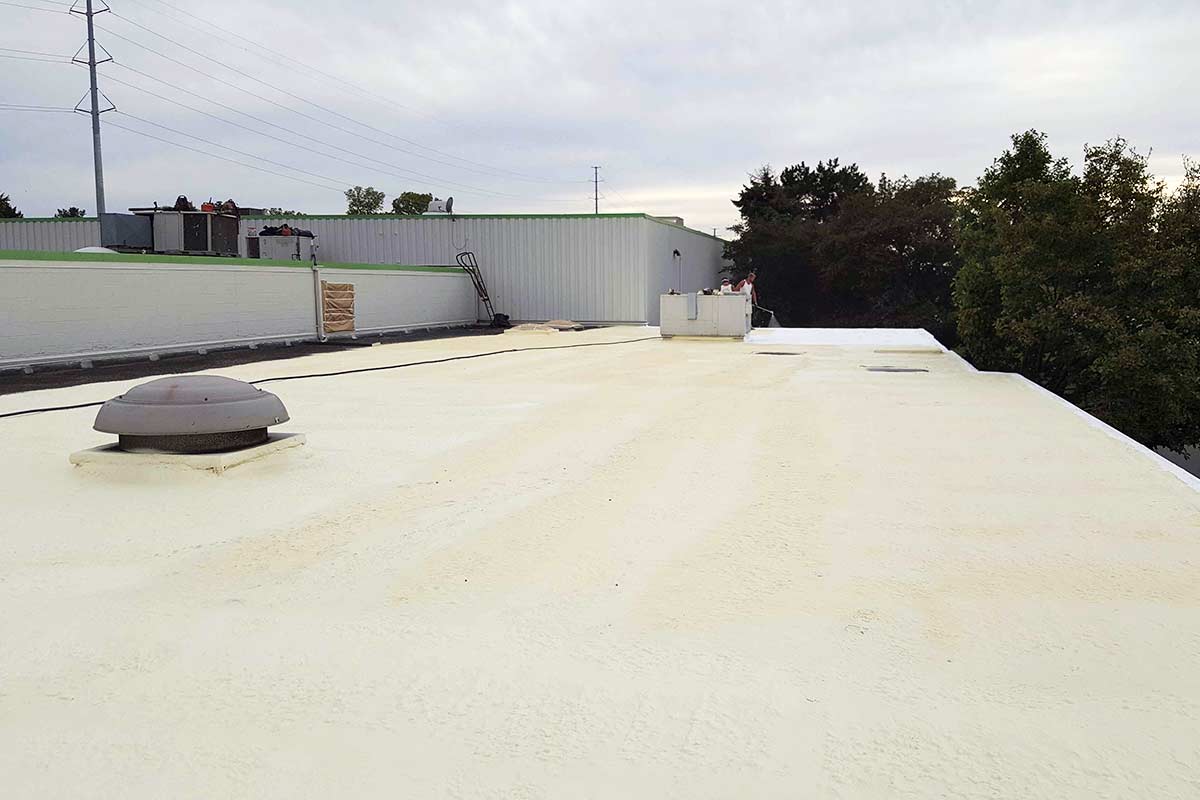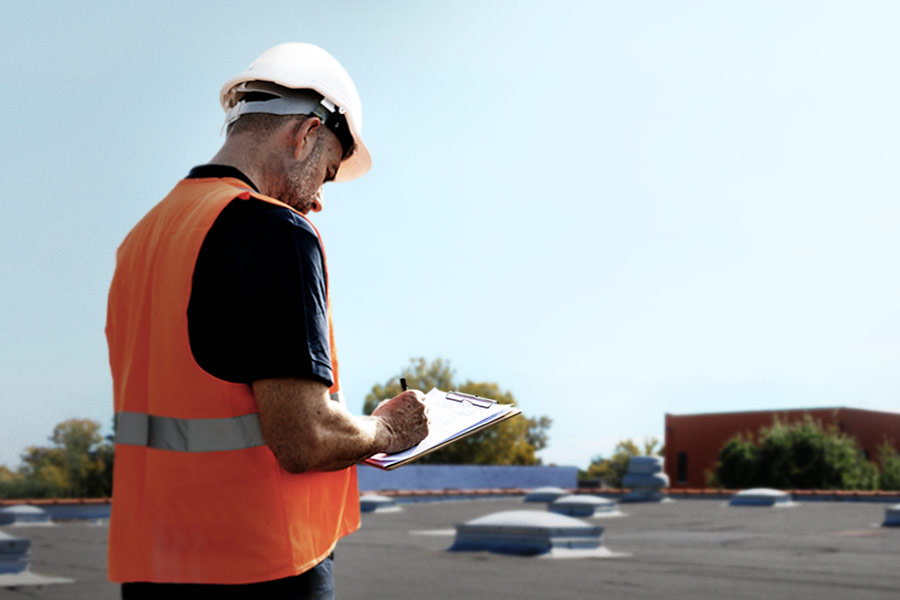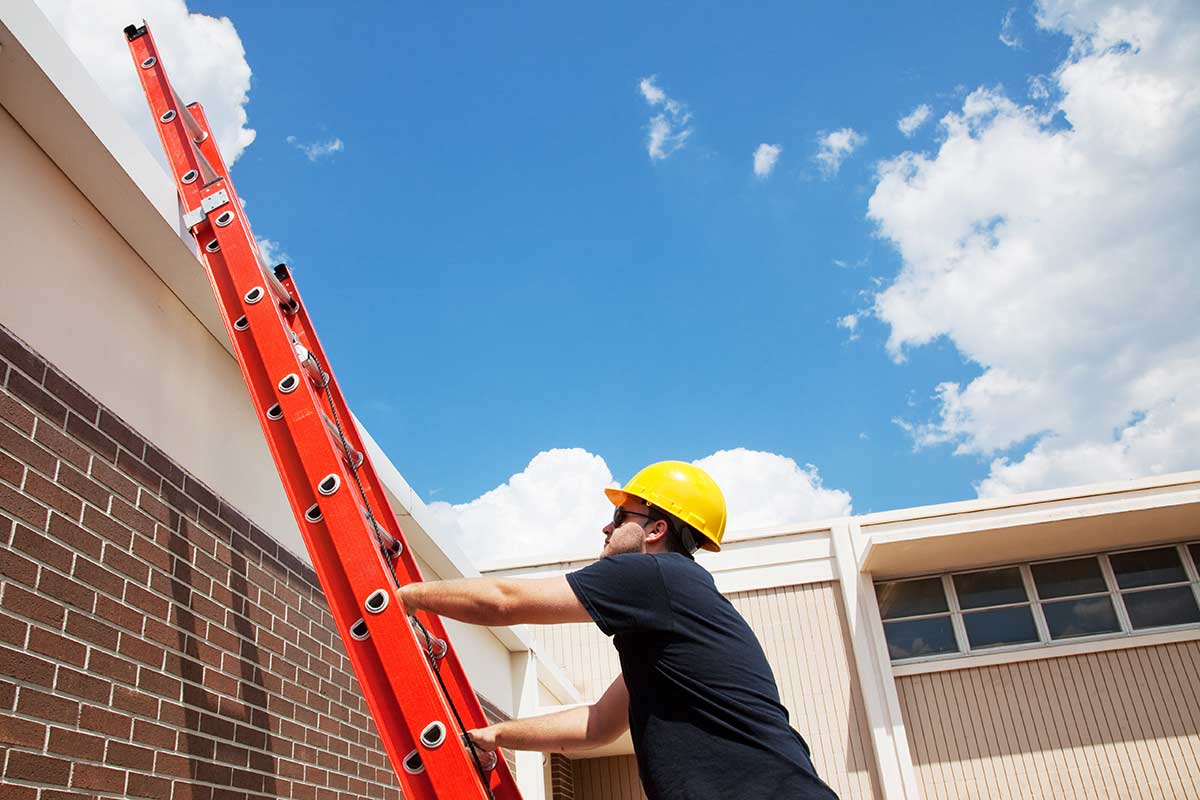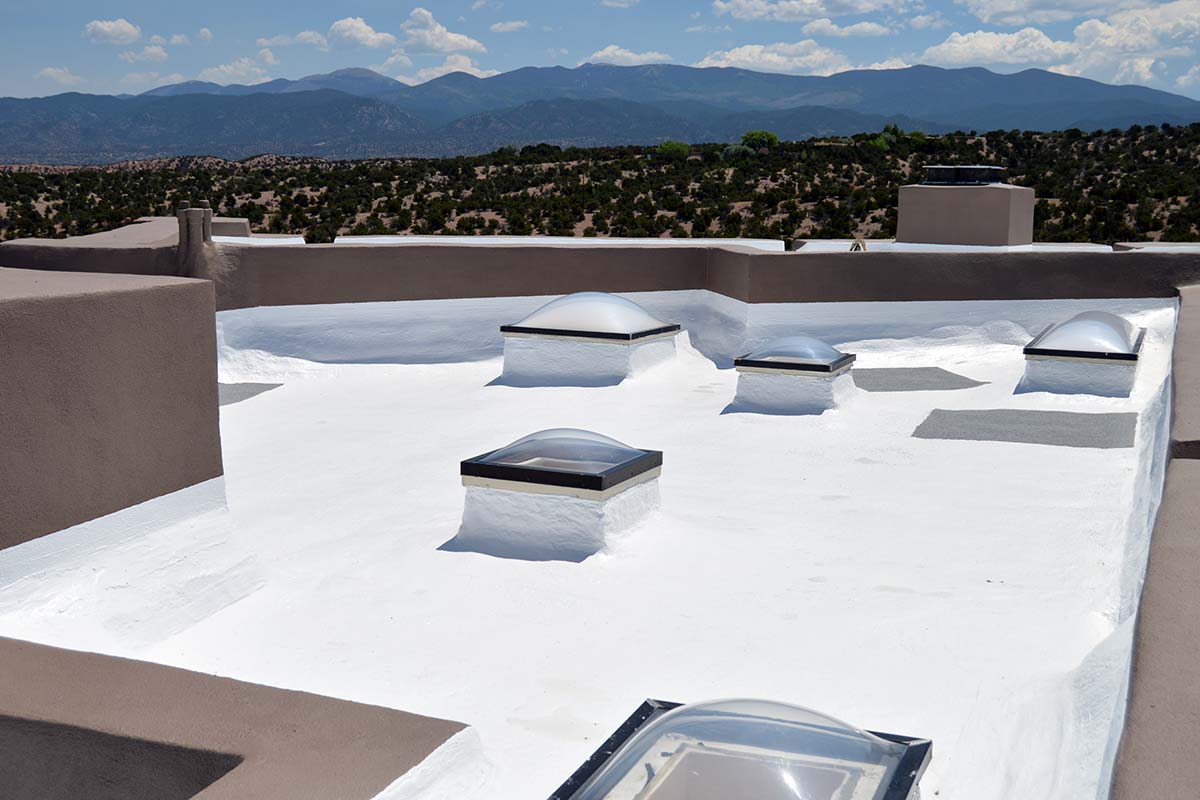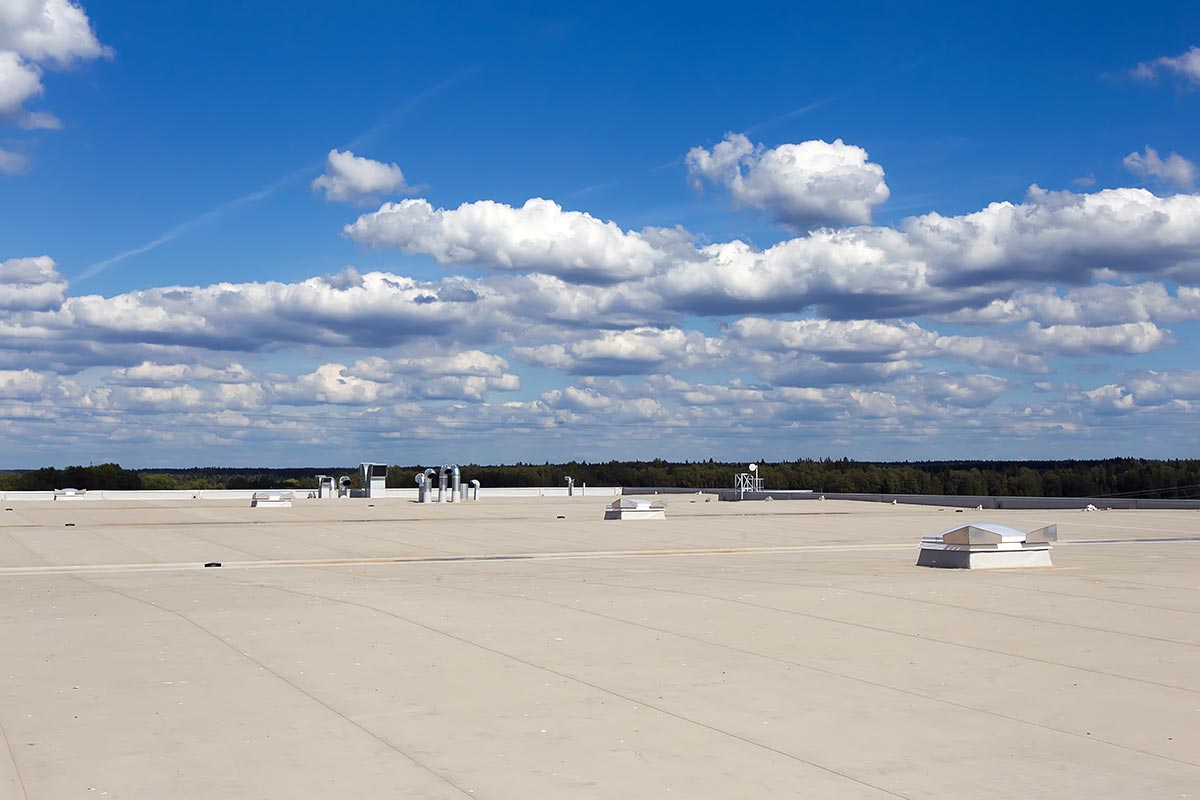
Flat roofs are very common. The vast majority of commercial and industrial facilities around the world have a flat roof. So it’s not surprising to see such an abundance of replacement options out there.
For many property owners and facility managers, a commercial roof replacement is a once-in-a-lifetime occurrence, so choosing the best flat roof materials for the job is no small task.
Common Flat Roof Materials
For those researching replacement options for flat roofs, there are several key factors to consider such as material and installation costs, life expectancy, energy ratings, ease-of-maintenance, environmental concerns, aesthetics, etc.
Below, we break down some of today’s most widely used flat roofing materials.
Modified bitumen, or mod bit, is an asphalt-based flat roof material that is modified with special polymers to increase pliability and performance. It’s manufactured into rolls that consist of a smooth or granulated surfacing finish and can be hot-applied, cold-applied, or self-adhered.
Mod bit systems are generally more expensive than other commercial flat roofing materials and can last anywhere from 15 to 20 years. They are also a fairly durable and energy-efficient roofing solution capable of enduring extreme temperature variations and diminishing the flow of heat on roof surfaces.
The primary drawback of a modified bitumen roof is its relatively short lifespan. It can also be difficult to identify the source of a leak on this particular roofing substrate.
Recommended reading: Modified Bitumen Roofing: The Complete Guide
Built-up roofs (BUR) have been around for a long time—over 100 years in fact. They are one of the most common types of systems used in commercial and industrial roofing.
Built-up roofs are comprised of several alternating layers of bitumen (asphalt) and reinforcing fabrics (ply sheets) and finished with a top layer of aggregate, such as gravel, slag, or mineral granules.
Most built-up roof constructions have a lifespan of 15-30 years. They typically require little maintenance and provide excellent UV and waterproofing protection. The aggregate top layer of a built-up system is also fire-resistant and aesthetically pleasing.
Compared to other flat roof systems, built-up roofs are more expensive and take longer to install. They are also more susceptible to water and wind damage.
EPDM (ethylene propylene diene terpolymer) is a synthetic rubber compound often used on low-slope flat roofs. Commonly referred to as “rubber roofing,” EPDM roofing has gained a reputation as a versatile and effective roofing solution.
The vast majority of EPDM membranes are black, however, they can also be white, gray, and tan.
EPDM flat roof materials are conformable, impermeable, lightweight, and durable. They have a lifespan of about 30+ years and generally cost less than other types of single-ply membranes. They are also relatively easy to maintain in comparison to other commercial flat roofing materials.
For its many qualities, EPDM is not suited for every commercial roofing environment. It’s prone to shrinkage with age and has a tendency to puncture rather easily.
It’s also worth noting that black EPDM roofs absorb more heat. Therefore, they are less energy-efficient than their bright-white counterparts.
Recommended reading: EPDM “Rubber” Roofing: The Complete Guide
Single-Ply (PVC, TPO)
Over the past few decades, single-ply membranes such as PVC and TPO have become a lot more common on commercial flat roofs. These two materials look almost identical—so much so that it can be difficult to tell them apart. Both are white, heat-welded, thermoplastic roofing systems, but that’s mostly where the similarities end.
PVC (polyvinyl chloride) is a durable roofing product with a lifespan of about 20 years. It’s water and fire-resistant, and it’s also rated to withstand heavy winds, but this type of system generally costs more and has weaker puncture resistance than EPDM or TPO.
TPO (thermoplastic polyolefin) is a flexible material that lasts anywhere from 10-25 years. It’s less expensive than PVC and is relatively easy to install and maintain. TPO has only been around since the early ’90s, so little is known about the long-term effects this system provides.
It’s also worth mentioning that there is a real concern over quality variations of TPO membranes from one manufacturer to the next.
Recommended reading: The Ultimate Guide to TPO Roofing
While not nearly as common as the options mentioned above, spray polyurethane foam is probably one of the most effective flat roofing systems available. This type of roof combines closed-cell, plural-component, spray polyurethane foam (SPF) insulation with a protective elastomeric top-coating.
A properly maintained SPF roof can last over 50 years. They serve as an excellent insulation barrier for low-slope flat roofs and provide superior energy efficiency and thermal resistance (R-value).
Spray foam is an incredibly strong material. In fact, SPF systems are proven to increase the structural integrity of commercial buildings.
When it comes to spray foam roofing systems, not all contractors are created equal. Proper installation requires a great deal of technical knowledge and experience. There is a limited installation window for this type of system and the risk of overspray during application is cause for concern.
For information on other materials commonly used in flat roof systems, click here.
What Is the Best Flat Roofing Material?
In general, all of the commercial flat roofing materials mentioned above are proven to be highly effective roofing solutions. That being said, not all commercial roofing environments are exactly the same. Determining which flat roof material works best ultimately depends on its suitability in a given roofing application.
Ideally, this can and should only be determined on a case-by-case basis—but when it comes to replacing a commercial roof, is there a better alternative? We certainly think so.
Fluid-Applied Roof Restoration
What if you could add 10, 15, or even 20 more years of life to your existing commercial roof and save money while doing so? You would be interested, right?
At American WeatherStar, we specifically develop high-performance roof coating systems for flat roofs. Our roofing systems are being utilized by companies of all sizes to restore, waterproof, and protect existing flat roof systems. They are proven to stop leaks, reduce energy consumption, lower maintenance costs, and extend service life—all for a fraction of the cost of total roof replacement.
Furthermore, all of our roof restoration systems are backed with long-term NDL System or “material-only” warranty options for added protection and peace of mind.
Want to know more? Click here for a complete and comprehensive overview of fluid-applied roof restoration from American WeatherStar.
Final Thoughts
It’s important to point out that not all flat roof materials are candidates to receive a roof restoration system. In many cases, a tear-off and replacement may be the best and only available option.
To learn if a roof restoration system is right for your commercial property, click here to schedule a free roof inspection with an American WeatherStar Approved Contractor.
Related Posts
In Need of a Commercial Roof Inspection?
Perhaps you’ve noticed leaks in your building or unsightly brown stains on the ceilings and interior walls. Whatever the case may be, these…
How to Establish a Roof Maintenance Program
The most important reason for establishing a roof maintenance program is to protect the capital investment of a new roof. Proper maintenance…
What Are the Benefits of a Cool Roof?
Cool roofs are on the rise due to an increased recognition that cool roofs can help your building or home be more comfortable and…

